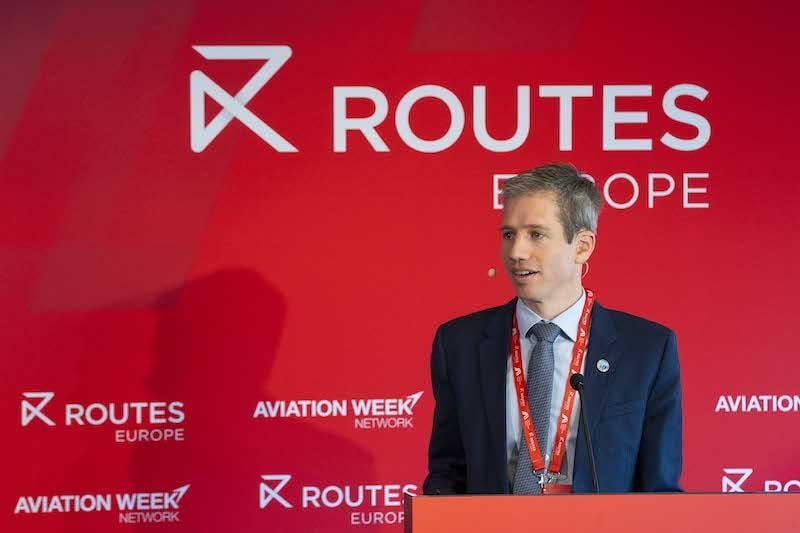
ACI Europe's Michael Stanton-Geddes on stage at Routes Europe 2024 in Aarhus, Denmark.
AARHUS, Denmark—Only 44% of airports in Europe have exceeded their 2019 passenger traffic levels despite the total volume across the region’s airport network recovering to 95% of pre-pandemic levels in 2023.
Speaking at Routes Europe 2024, Michael Stanton-Geddes—ACI Europe director of economics and competition—said the figure highlights the transformation seen in the airport industry over the past four years, with the rate of change especially acute for many smaller and regional airports, where capacity offered by both network carriers and LCCs has decreased.
“A transformation in the market has been a permanent shift in traffic flows, and this is evident at a country level,” Stanton-Geddes added, saying that nations in southern and eastern Europe experiencing growth, while their counterparts in central and northern Europe struggle to regain pre-pandemic volumes.
According to ACI data, passenger traffic in Slovakia was down by 40% in February 2024, compared with February 2019. Likewise, Finland and Germany each experienced a 23% reduction. However, Portugal recorded a rise of 28%, Spain saw a hike of 18% and Greece had an increase of 17%.
Stanton-Geddes highlighted that airport seasonality in Europe has become even more pronounced post-pandemic, with much weaker traffic levels during the first quarter of the year, but stronger traffic levels in July and August.
He said that the region’s market has also become more international—intra-European capacity will be down by about 1.9% during summer 2024, compared with summer 2019, while traffic out of the region will be 7% higher.
“Another transformation in the European market is that average flight length for intra-European flights has increased by almost 7.5%,” Stanton-Geddes said, explaining that the average flight length is now 1,181 km (734 mi.). “This suggests a shift away from domestic travel to longer, short-haul leisure travel.”
He added that there has been a notable decrease in aircraft options in recent years, particularly in the regional jet market, leaving fewer small-gauge options for airports on thin routes. ACI data showed that the share of intra-European flights using regional jets would be about 5% in 2024, compared with 7% in 2019. The narrowbody share has increased from 91% to 94% over the same period, while the widebody share has shrunk from 2% to 1%.
“Overall, the European market has moved to the south and the east. It is more seasonal, more low-cost, more international, and more consolidated. There are fewer airlines and fewer aircraft options for airports competing in this market,” Stanton-Geddes said.
He added that to adapt to the changing dynamics, smaller airports in particular must continue to de-risk their operations by diversifying their airline and customer base. However, he accused governments and regulators of being too focused on protecting airlines, claiming that economic regulation on airport charges has “suboptimal outcomes.”





